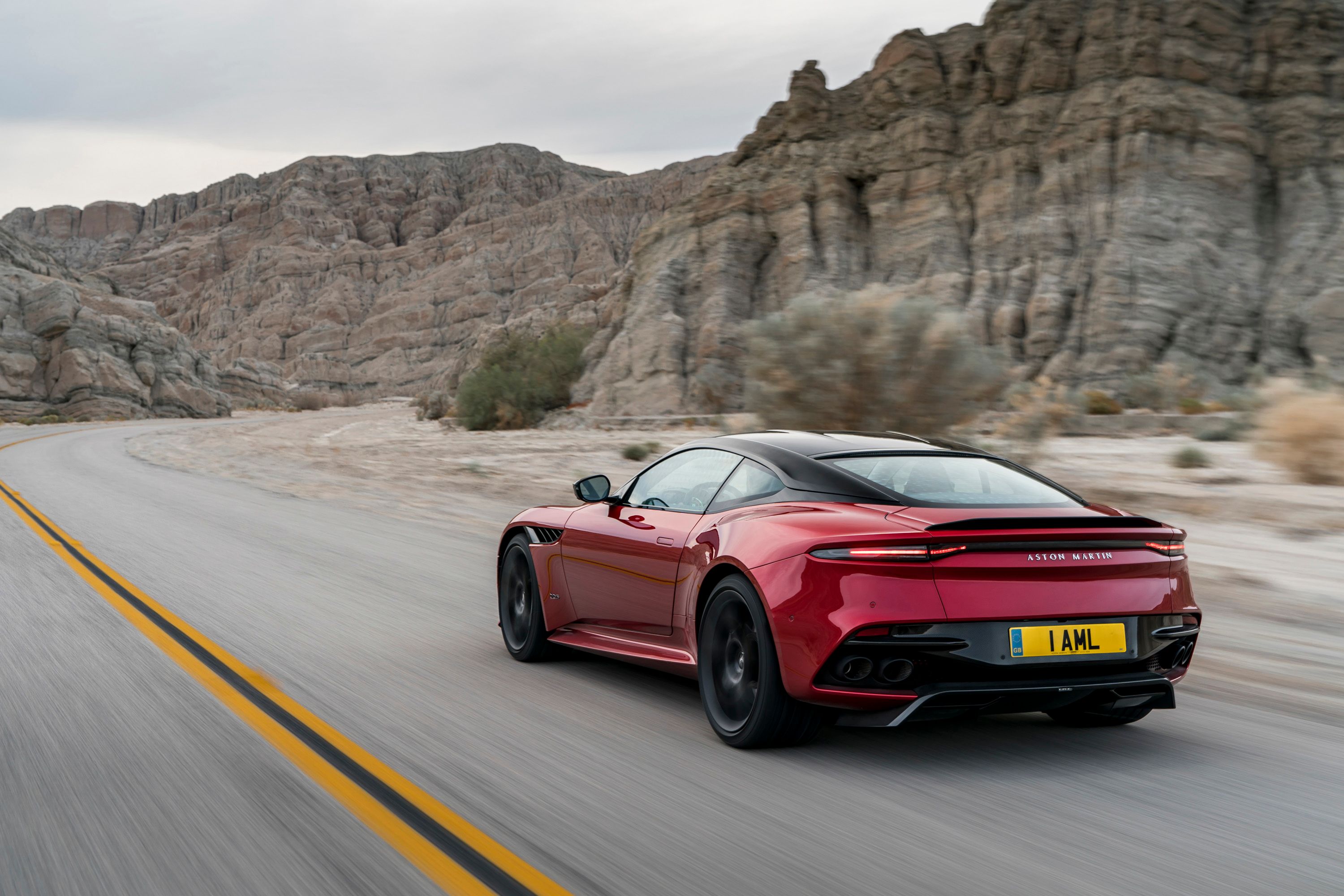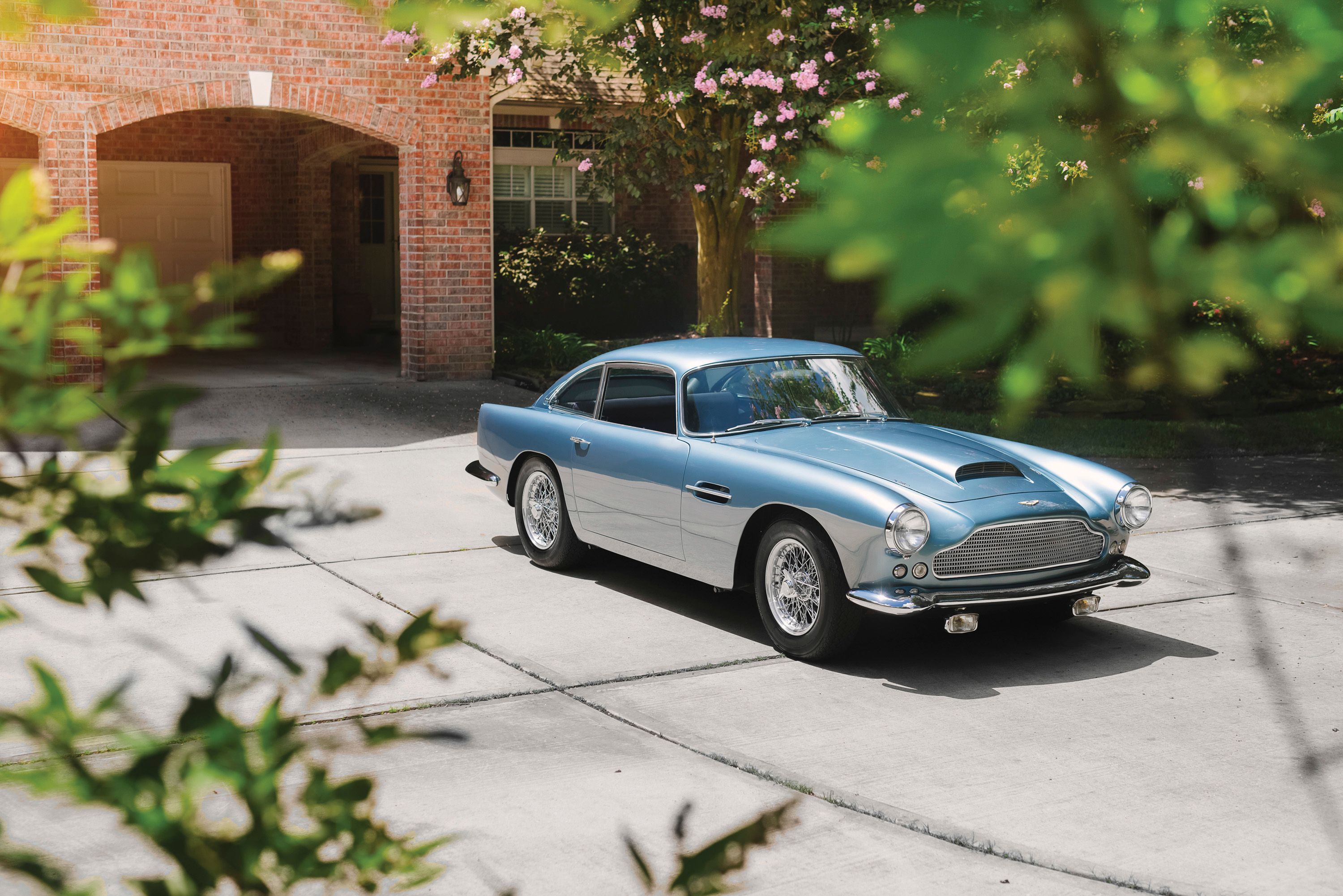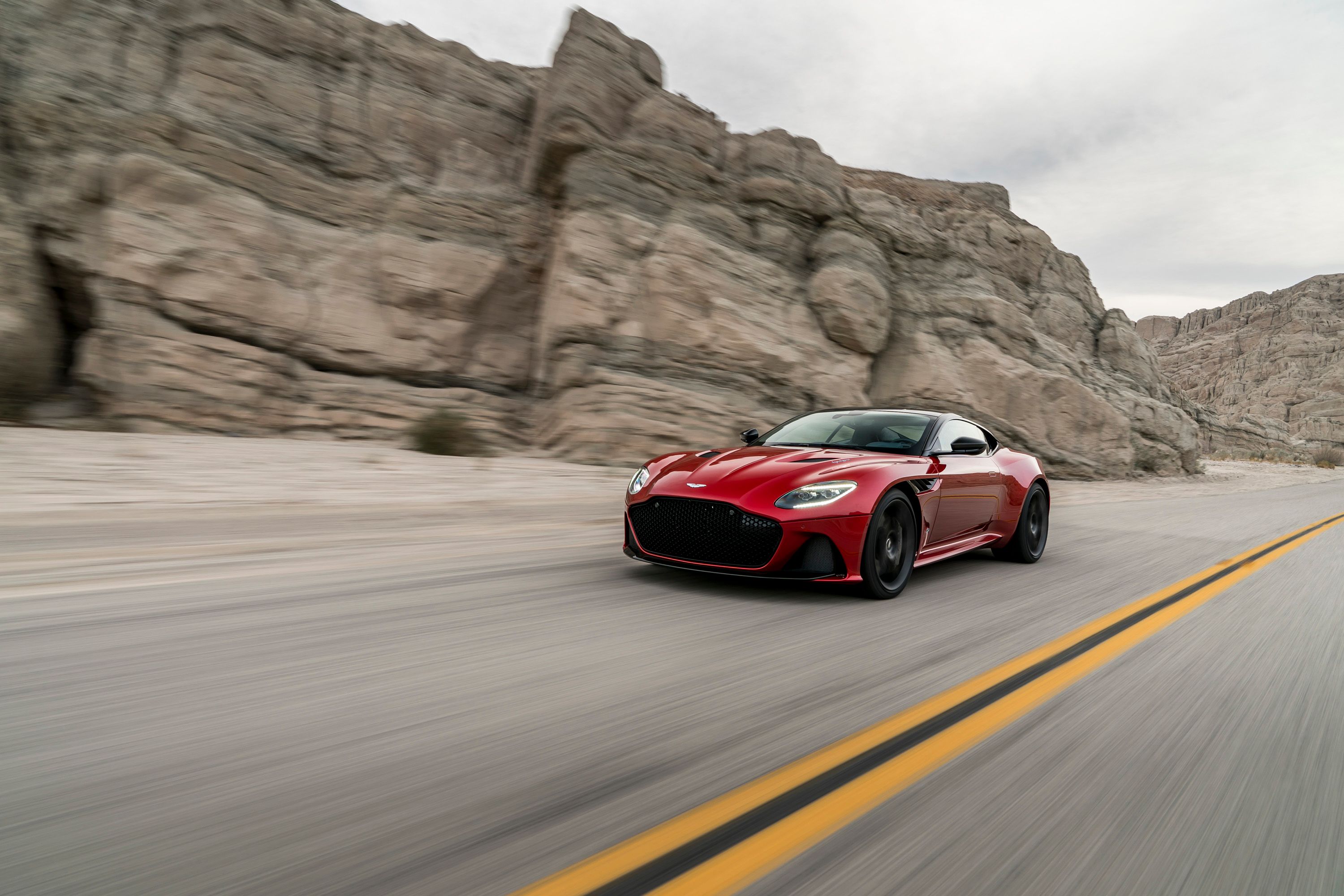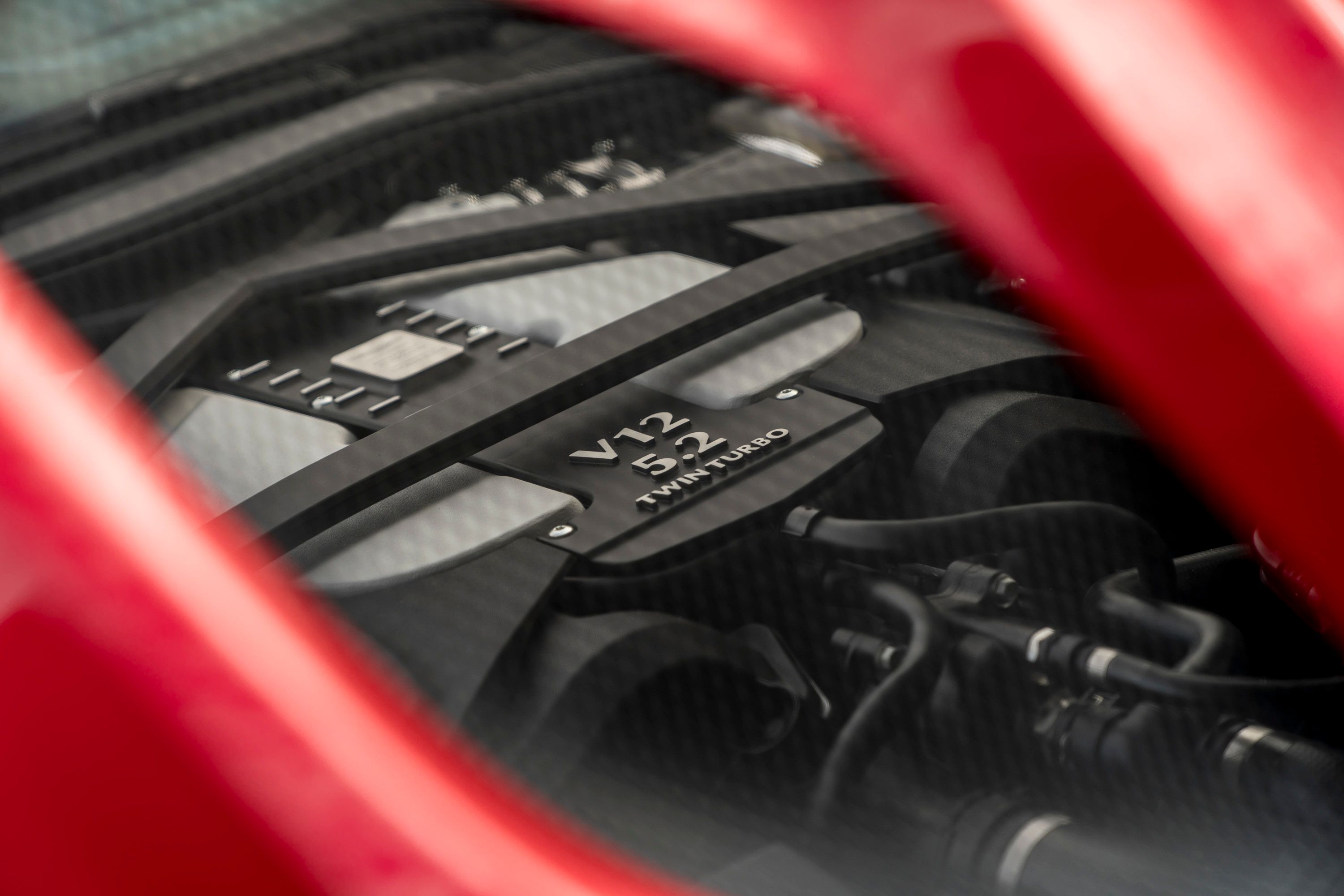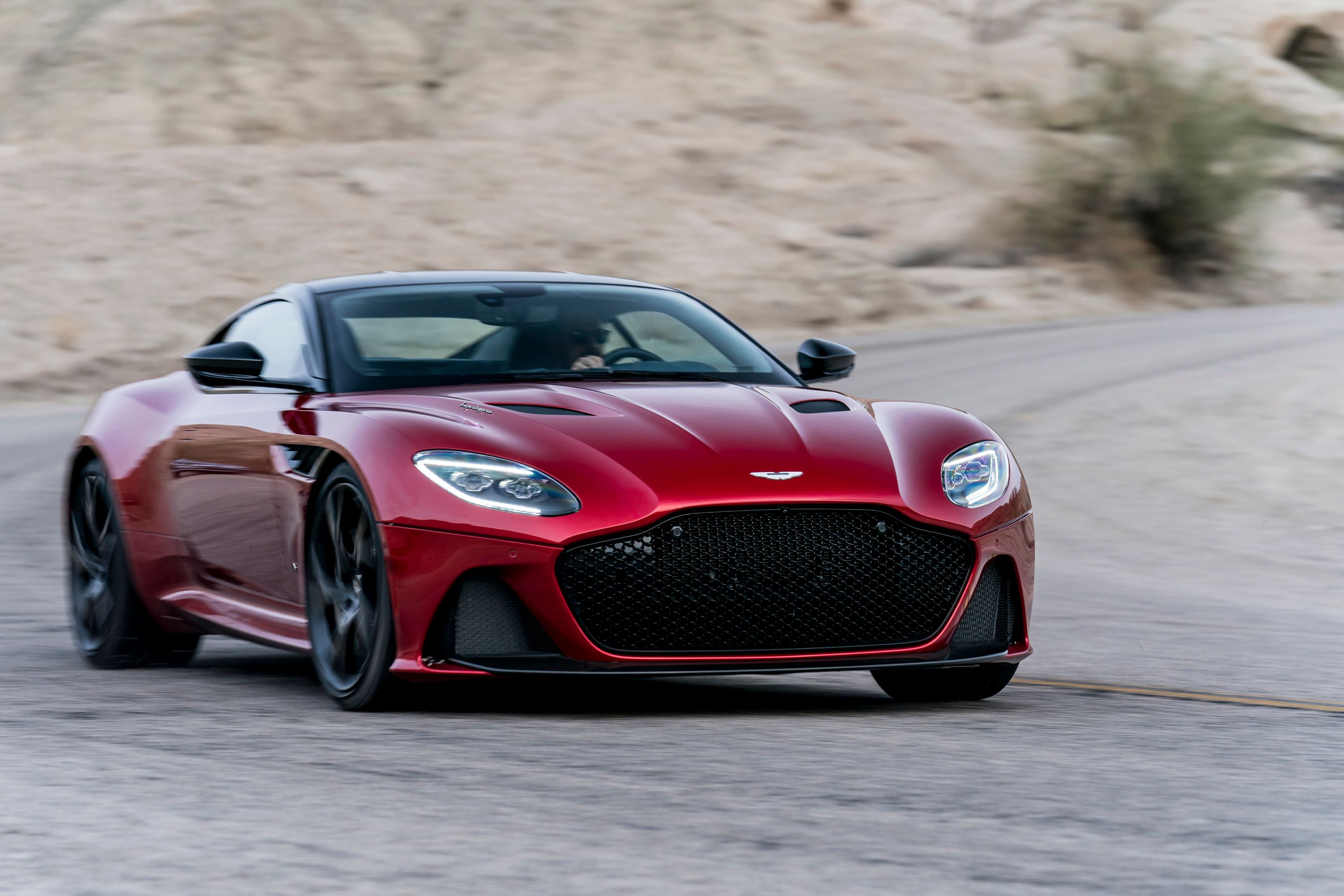Aston Martin just replaced the Vanquish S with the DBS Superleggera, and the new grand tourer is a stunning vehicle in terms of design and technology. It's lighter, faster, and more powerful than its predecessor, while also incorporating a lot more technology and race-inspired features. The new two-door also marks the return of the "DBS" badge, and it's the company's first modern vehicle that pays tribute to Carrozzeria Touring, the design house that helped pen some of the most iconic Aston Martins. But more on this and other important facts about the DBS Superleggera in the article below.
Continue reading for the full story.
Iconic Heritage
Just like it did in 2007, Aston Martin retired the Vanquish name and revived the "DBS" badge for its flagship grand tourer. The DBS is already an iconic nameplate for the brand, having been introduced in 1969 as the world's fastest four-seat production car. Sold alongside the DB6 for a few years, it was penned by William Towns offered with both inline-six and V-8 engines. The latter was one of the most desirable sports cars of the era. Production ended in 1972 after just over 1,000 units built.
The DBS remained dormant for 35 years until it was revived to replace the first-generation Vanquish. A development of the DB9, it gained a V-12 engine for the first time, as well as a Volante version. It was replaced by the second-gen Vanquish in 2012.
But, unlike its predecessors, the new DBS also sports a "Superleggera" badge, a tribute to Carrozzeria Touring, which helped design the DB4, launched in 1967, as well as the DB5, and the DB6. Granted, the DBS Superleggera is in no way related to Carrozzeria Touring outside the badge on its body, but the Superleggera name is more than fitting with the DBS being significantly lighter than the DB11 it is based on.
Carbon-fiber Body
Carbon-fiber may be a common material in modern cars, but only a handful of sports cars benefit from a full carbon body. And it's usually used in high-profile, rare and expensive vehicles made by Pagani and Koenigsegg. Given that the DBS Superleggera costs a little over $300,000, it's an impressive feat.
Although you can't order it with a base, glossy finish, options you can have with a Koenigsegg Agera or a Bugatti Veyron, the carbon's contribution to the DBS is massive, as it helps shave most of the 159 pounds compared to the DB11. At 3,732 pounds, the DBS Superleggera is some 100 pounds lighter than the Vanquish S and only 138 pounds heavier than the race-bred Ferrari 812 Superfast.
The cool thing is that you can order visible carbon-fiber in the roof. Combine that with a lively exterior color and you get a superb combo.
|
Aston Martin DBS Superleggera |
3,732 lbs |
|
Aston Martin DB11 |
3,891 lbs |
|
Aston Martin Vanquish S |
3,834 lbs |
|
Ferrari 812 Superfast |
3,594 lbs |
The most powerful Aston Martin Ever
Granted, Aston Martin's old naturally aspirated V-12 was a cool engine that linked the DB9 and the Vanquish to the good old days when automakers didn't have too many environmental restrictions to worry about. But times have changed and the 6.0-liter unit had to be retired. Fortunately, Aston Martin crafted quite the potent twin-turbo V-12 that injected more than 600 horsepower in the DB11. For the DBS, the Brits took things one step higher, squeezing 715 horsepower and 664 pound-feet from the 5.2-liter engine.
This rating makes the DBS Superleggera the most powerful Aston Martin yet. And before you say anything, I know that the Vulcan cranks out 820 horses, but that's a track-only car limited to only a handful of units. The DBS, on the other hand, is a full-scale production model available to the masses (that can afford it, of course).
|
Engine |
All-alloy quad overhead cam, 48-valve 5.2-litre bi-turbo, V12 with stop/start cylinder deactivation |
|
Cooling |
Water-to-air Charge |
|
Drive |
Front mid-mounted engine, rear-wheel drive |
|
Compression ratio |
9.3:1 |
|
Maximum power |
715 HP @ 6,500 RPM |
|
Maximum torque |
663 LB-FT @ 1,800-5,000 RPM |
|
Acceleration 0-62mph (0-100km/h) |
3.4 seconds |
|
Maximum speed |
211mph |
|
Transmission |
Rear mid-mounted ZF eight-speed automatic |
Taking Aero Work to the Next Level
The DBS isn't just a lighter, more powerful DB11 with a more menacing design. It also takes the DB11's already advanced aerodynamics to a new level. In addition to using the "curlicue" front fender vents and the Aeroblade on the deck lid, the DBS Superleggera also benefits from an F1-inspired double diffuser. This element further optimizes airflow around and under the vehicle and, more importantly, it helps it generate a whopping 397 pounds of downforce at 211 mph, the DBS' maximum speed. That's the higher figure ever for a production Aston Martin and, more importantly, it's obtained with no additional drag. And this is solid proof that the DBS Superleggera is a full-fledged supercar dressed in a fancy grand tourer suit.
Fuel Economy Is Up!
By using turbocharging technology, Aston Martin was able to obtain a lot more power from a V-12 engine that's smaller than its predecessor. But extra oomph isn't the only advantage that comes with a twin-turbo engine. The 5.2-liter V-12 also returns better fuel economy. Full EPA figures aren't yet available, but Aston Martin did say that the DBS is good for 22.9 mpg combined. Granted, it's not much when compared to a hybrid or a compact sedan with a four-cylinder engine, but it's a massive, 6.9-mpg or 43.1-percent increase over the outgoing Vanquish S. Not that Aston Martin customers will ever worry about money spent at the pump, but it will help Aston Martin reach its fuel consumption and emission targets.
|
Combined MPG |
22.9 |
|
Combined l/100km |
12.28 |
|
CO2 |
285g/km |
Further reading
Read our full review on the 2019 Aston Martin DBS Superleggera.
Read our full review on the 2018 Aston Martin Vanquish S.
Read our full review on the 2018 Aston Martin DB11.
Read more Aston Martin news.

